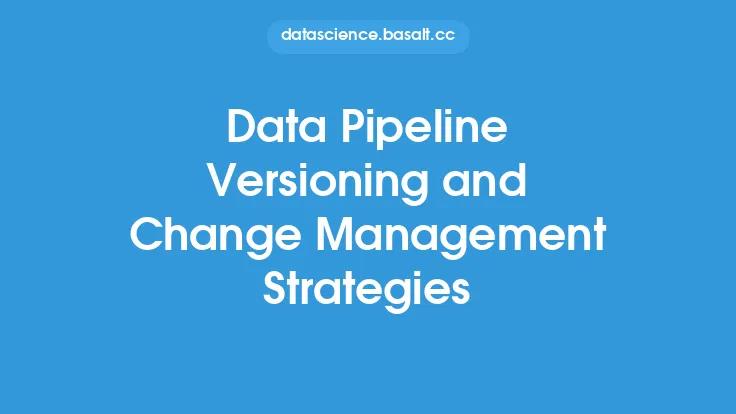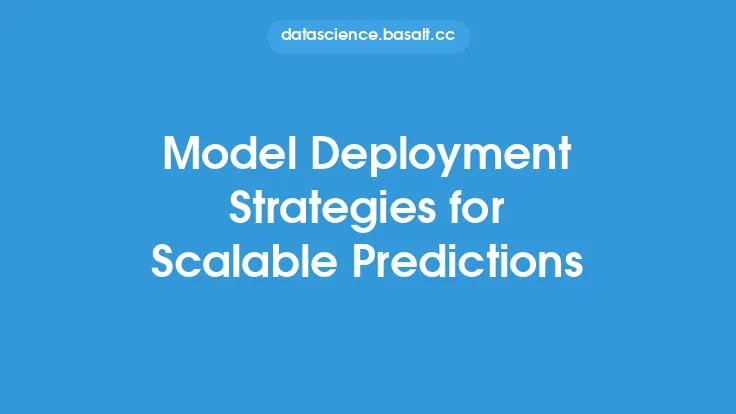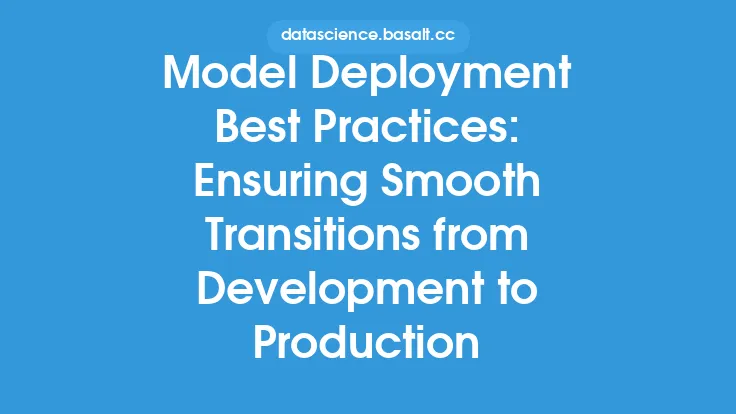Machine learning models are constantly evolving, with new versions being trained and deployed to improve performance, adapt to changing data distributions, or incorporate new features. However, this evolution can lead to challenges in maintaining a reliable and consistent deployment process. Model versioning and rollback strategies are essential components of a robust deployment pipeline, ensuring that changes to the model do not compromise its performance or availability.
Introduction to Model Versioning
Model versioning refers to the practice of assigning a unique identifier to each version of a machine learning model, allowing for the tracking and management of changes over time. This is crucial in a deployment environment, where multiple versions of a model may be running concurrently, and changes to the model can have significant impacts on its performance. Model versioning enables developers to identify, reproduce, and debug specific versions of a model, making it easier to manage and maintain a deployment pipeline.
Benefits of Model Versioning
The benefits of model versioning are numerous. Firstly, it allows for the tracking of changes to the model, enabling developers to identify the source of performance improvements or degradation. Secondly, it enables the reproduction of specific versions of a model, making it easier to debug and test changes. Finally, model versioning enables the deployment of multiple versions of a model concurrently, allowing for A/B testing and canary releases.
Rollback Strategies
Rollback strategies are an essential component of a reliable deployment pipeline, enabling the rapid recovery from errors or performance degradation. A rollback strategy involves reverting to a previous version of a model, in the event of a failure or performance issue. This can be achieved through a variety of means, including:
- Version-based rollback: This involves maintaining a history of model versions, and reverting to a previous version in the event of a failure.
- Canary releases: This involves deploying a new version of a model to a small subset of users, and monitoring its performance before rolling it out to the entire user base.
- A/B testing: This involves deploying multiple versions of a model concurrently, and comparing their performance to determine which version to retain.
Implementing Model Versioning and Rollback Strategies
Implementing model versioning and rollback strategies requires careful planning and execution. The following steps can be taken to implement these strategies:
- Use a version control system: Use a version control system, such as Git, to track changes to the model and assign unique identifiers to each version.
- Maintain a model registry: Maintain a registry of model versions, including their performance metrics and deployment history.
- Implement automated testing: Implement automated testing and validation procedures to ensure that each version of the model meets performance and quality standards.
- Use a deployment pipeline: Use a deployment pipeline to automate the deployment of model versions, and to enable rapid rollback in the event of a failure.
Technical Considerations
From a technical perspective, implementing model versioning and rollback strategies requires careful consideration of several factors, including:
- Model storage: Models must be stored in a way that allows for efficient retrieval and deployment of specific versions.
- Model serving: Models must be served in a way that allows for rapid switching between versions, and for the deployment of multiple versions concurrently.
- Monitoring and logging: Monitoring and logging must be implemented to track the performance of each model version, and to enable rapid detection of errors or performance degradation.
Best Practices
The following best practices can be followed to ensure the effective implementation of model versioning and rollback strategies:
- Use a consistent naming convention: Use a consistent naming convention to identify model versions, and to track changes over time.
- Maintain a change log: Maintain a change log to track changes to the model, and to enable the reproduction of specific versions.
- Test thoroughly: Test each version of the model thoroughly, to ensure that it meets performance and quality standards.
- Monitor performance: Monitor the performance of each model version, to enable rapid detection of errors or performance degradation.
Conclusion
Model versioning and rollback strategies are essential components of a reliable deployment pipeline, enabling the tracking and management of changes to machine learning models over time. By implementing these strategies, developers can ensure that changes to the model do not compromise its performance or availability, and can rapidly recover from errors or performance degradation. By following best practices, and carefully considering technical factors, developers can ensure the effective implementation of model versioning and rollback strategies, and can maintain a robust and reliable deployment pipeline.





